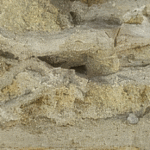
Mars, our neighboring planet, has always been a source of fascination for scientists and space enthusiasts alike. Over the years, various missions have been sent to study the Red Planet, and each has brought us one step closer to understanding its mysteries. The Perseverance rover, launched by NASA, is no exception. In its ongoing mission on Mars, Perseverance has made a groundbreaking discovery in the Jezero Crater, revealing a treasure trove of organic molecules that shed light on the planet’s intriguing past and its potential for harboring life.
Understanding the Organic Conundrum
The term “organic” often conjures different meanings for different people. To shoppers, it refers to food grown without artificial fertilizers or pesticides. For chemists, however, any carbon-containing molecule qualifies as organic, irrespective of its origin. Consequently, when organic molecules are detected on celestial bodies, such as Mars, it can lead to misconceptions and unwarranted assumptions about the presence of life.
Yet, it remains undeniable that all known life forms on Earth are organic, and complex organic molecules are essential prerequisites for life’s existence. The discovery of such molecules on Mars could be a significant milestone in our search for extraterrestrial life.
Perseverance’s Revelations: Organic Diversity on Mars
Since landing on Mars, Perseverance has been exploring and analyzing various rock formations. Recently, the rover has focused on the Máaz and Séítah formations within the Jezero Crater. Initial analyses revealed that Mars harbors a more diverse array of organic molecules than observed in Gale Crater or Martian meteorites.
Perseverance employs deep ultraviolet radiation to examine the fluorescence of samples, providing insights into their composition. This method has allowed scientists to estimate that the Máaz formation contains around 20 parts per million (ppm) of organic compounds, while the Séítah formation contains approximately two ppm.
The significance of this discovery lies not only in the presence of organic molecules but also in the variability of these molecules across different rock formations. Such diversity indicates the likelihood of varied environmental conditions and processes contributing to their formation.
Unraveling Organic Origins on Mars
The origin of carbon on Mars can be traced back to the processes occurring in stars, where carbon is produced after the conversion of hydrogen into helium. However, the mechanisms that lead to the incorporation of carbon into complex organic compounds still need to be fully understood.
The presence of organic molecules in Martian meteorites has sparked multiple hypotheses, including their formation in water, reduction of carbon dioxide, or the introduction of carbon-rich materials from space. The watery origins of both the Máaz and Séítah formations provide tantalizing clues, suggesting that distinct aqueous alteration or deposition processes could have contributed to the presence of organic compounds.
Life’s Building Blocks: A Martian Legacy
A crucial aspect of the discovery is the time period in which the key building blocks for life could have been present on Mars. The analysis indicates that these molecules may have existed on the planet as early as 2.3 to 2.6 billion years ago. While it is uncertain whether these compounds originated from biological sources, the presence of such materials significantly enhances the likelihood that life may have emerged on Mars at some point in its history.

Conclusion: Paving the Way for the Future
Perseverance’s discovery of diverse organic molecules in the Jezero Crater marks a groundbreaking achievement in our quest to understand the Red Planet. While the findings do not conclusively prove the existence of past or present life on Mars, they offer valuable insights into the planet’s ancient history and the potential for habitability.
As Perseverance continues its mission, the prospect of future sample-return missions promises even more comprehensive Martian materials analyses conducted in sophisticated laboratories on Earth. Such endeavors will undoubtedly deepen our understanding of Mars’ organic chemistry and provide clues about the planet’s habitability over time.
As we eagerly await further revelations from Perseverance and other future missions, we can revel in the knowledge that humanity’s unyielding spirit of exploration and curiosity continues to push the boundaries of knowledge, unraveling the enigmatic secrets of the universe, one discovery at a time.
Abuse evolution Greg Locke Hate Preacher Islam LGBTQ+ Life Living Waters Mars Mental Health news Pat Robertson Ray Comfort Religion Science Supreme Court Taliban
Latest Posts
- Complex Life May Have Evolved More Than Once — And Why That Should Thrill Anyone Who Values Reality Over Revelation
- Teenager Receives Death Penalty in Pakistan for Blasphemy
- A Tragic Tale of Intolerance: The Killing of Shazia Imran
- Bolivian Prosecutors Launch Probe into Catholic Church Abuse Scandal
- The Dark Side of Dogma: Executions for Blasphemy Surge in Iran





